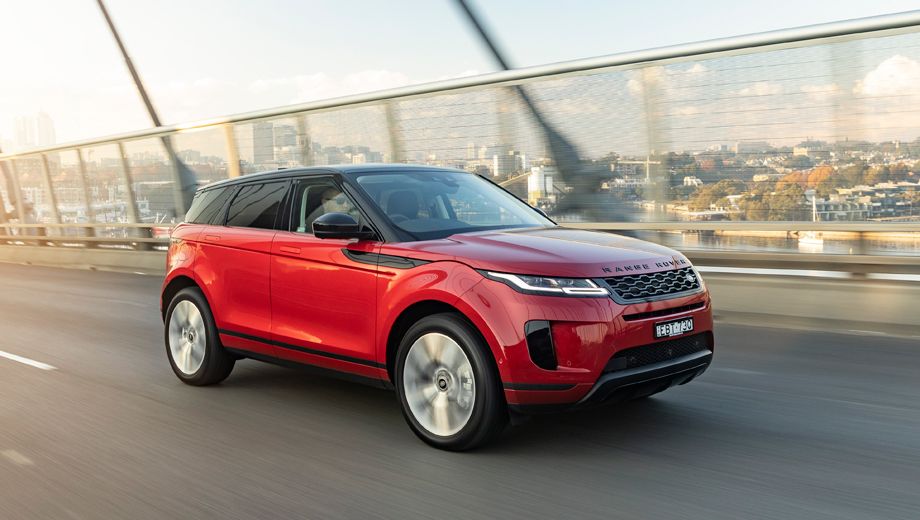Road test: Range Rover Evoque 2019 looks smart, drives smooth

In the me-too herd of suburban SUVs there is only one Range Rover Evoque.
As much a fashion accessory as a transport tool, despite its deeply-rooted four-wheel drive DNA, the second-generation 2019 Evoque (starting around $65,000) still stands out in any pack and proves there's always room for good design and innovation in the SUV world.
“The Evoque reinvented Land Rover a bit in 2007. So, do you rip it up and be different, or do you take what’s great and successful and mature it?,” poses Mark Cameron, managing director of Jaguar Land Rover in Australia.
“For the brand, Evoque is really important. It’s seen as much more urban, much more feminine, so it gives us a really good spread. From a profit contribution, it’s important as well," Cameron tells Australian Business Traveller.
So the answer is obvious, and reflected in the second-generation Evoque that is currently creating queues and turning heads. “It’s a lifestyle car. It transcends into fashion, and design," Cameron espouses.
But don’t wait for a three-door Evoque, or even a Cabrio, because those two were chopped to save money and add focus to the five-door model which has led sales from day one.
This second-gen Evoque II is same-same yet also different, designed using a formula which has worked for generations.
The basic shape stays much as it began – an angular box with a wedged side profile – but there is somehow more of everything.
In the front, the nose is more pronounced and aggressive, there is more window space in the sides without losing the roof’s taper to the tail, and it rolls on alloys that grow all the way to 21 inches.
JLR describes it as a four-door coupe, but it’s a world away from a BMW X6 or even the upcoming Porsche Cayenne Coupe with its angular approach.
The body is wrapped over an all-new chassis package that’s been developed for more strength with less weight and also, inevitably, the upcoming electrification of the Evoque with a hybrid package.
The design story continues and develops on the inside, in a car which looks and feels more like the super-luxury Velar than the original Evoque.
It’s smooth and stylish, from the leather-wrapped dash panel that sweeps across the cabin to the integration of the twin display screens and an instrument housing that rises up in front of the driver.
So the view is good, only slightly crimped to the rear, and the overall effect looks grown-up and luxurious.
In a surprising twist, the rotary ‘drive mode’ controller used to switch the off-road settings in Land Rovers is gone: that's now done through the infotainment system.
Practical matters include more knee room for back-seat passengers and a boot which has grown substantially to be golf-club friendly.
Mechanically, the package is predictable with diesel and petrol engines, constant four-wheel drive, and long-travel suspension for the times – perhaps rare – when an Evoque heads into Range Rover territory.
There are six versions of the Ingenium family of four-cylinder engines, three petrol and three diesel, depending on a buyer’s wants and needs on the power and torque fronts.
Also on the menu is a hybrid, only ‘mild’ for now to improve fuel economy, but a plug-in version with a usable electric-only city driving range is not far into the future.
On the road, the new Evoque is more full-some as well as more luxurious, with this high-riding chariot edging up to its sibling Velar style leader.
Predictably, my test car is well above the basic Evoque because JLR wants to make the best impression. It has the HSE luxury treatment, from big alloys to sumptuous leather, clocking in around $90,000 and powered by the best of the petrol engine packages.
It gets along briskly, there is none of the roly-poly cornering wobble in most SUVs, the technology is helpful without being intrusive – including a camera-enhanced rear-view mirror – and the infotainment package is packed with features yet zippier to respond.
The downside is that my test car, sitting on 21 inch alloys, is not at its best in suburban Sydney. Get it up to 80km/h and beyond, or trundle the freeways, and it’s smoothness and light. The big wheels look great but something smaller will mean a better ride in the city.













Hi Guest, join in the discussion on Road test: Range Rover Evoque 2019 looks smart, drives smooth